Abstract
Falcone, Giuseppe (Rutgers, The State University, New Brunswick, N.J.), and Walter J. Nickerson. Reduction of selenite by intact yeast cells and cell-free preparations. J. Bacteriol. 85:754–762. 1963.—Nonproliferating cell suspensions of Candida albicans rapidly reduced selenite to red, metallic selenium in the absence of added substrate. Cell suspensions reduced selenite optimally at pH 4.2. No added metabolite was found to be stimulatory; reduction was inhibited by methionine and formate as well as by fluoride, dinitrophenol, and certain sulfhydryl poisons. Cell-free preparations capable of reducing selenite were obtained from C. albicans and from baker's yeast disintegrated in a Hughes press. The enzymatic system had optimal activity at pH 7 with 10−2m selenite. Activity of the system was lost on dialysis but was restored upon the addition of dialyzable substances or of boiled, undialyzed extract.
Full text
PDF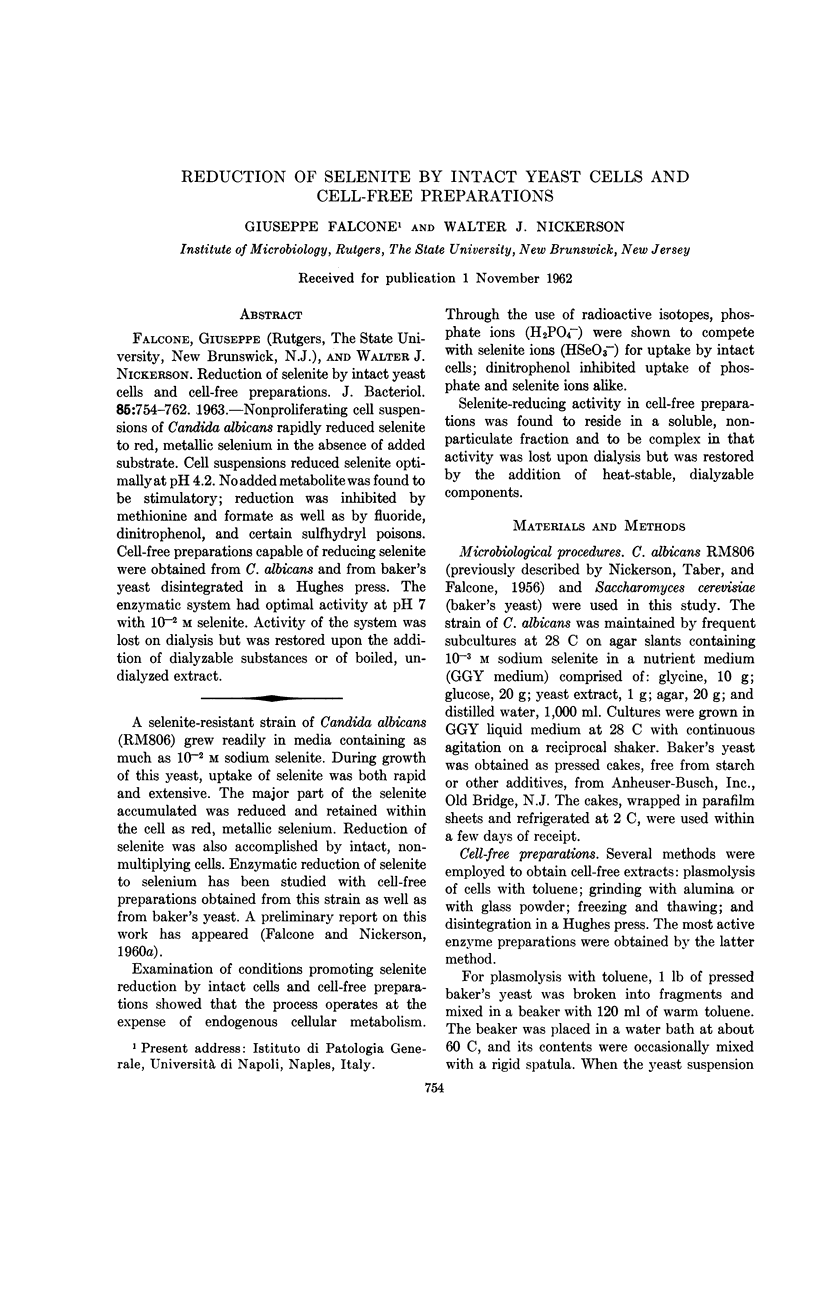
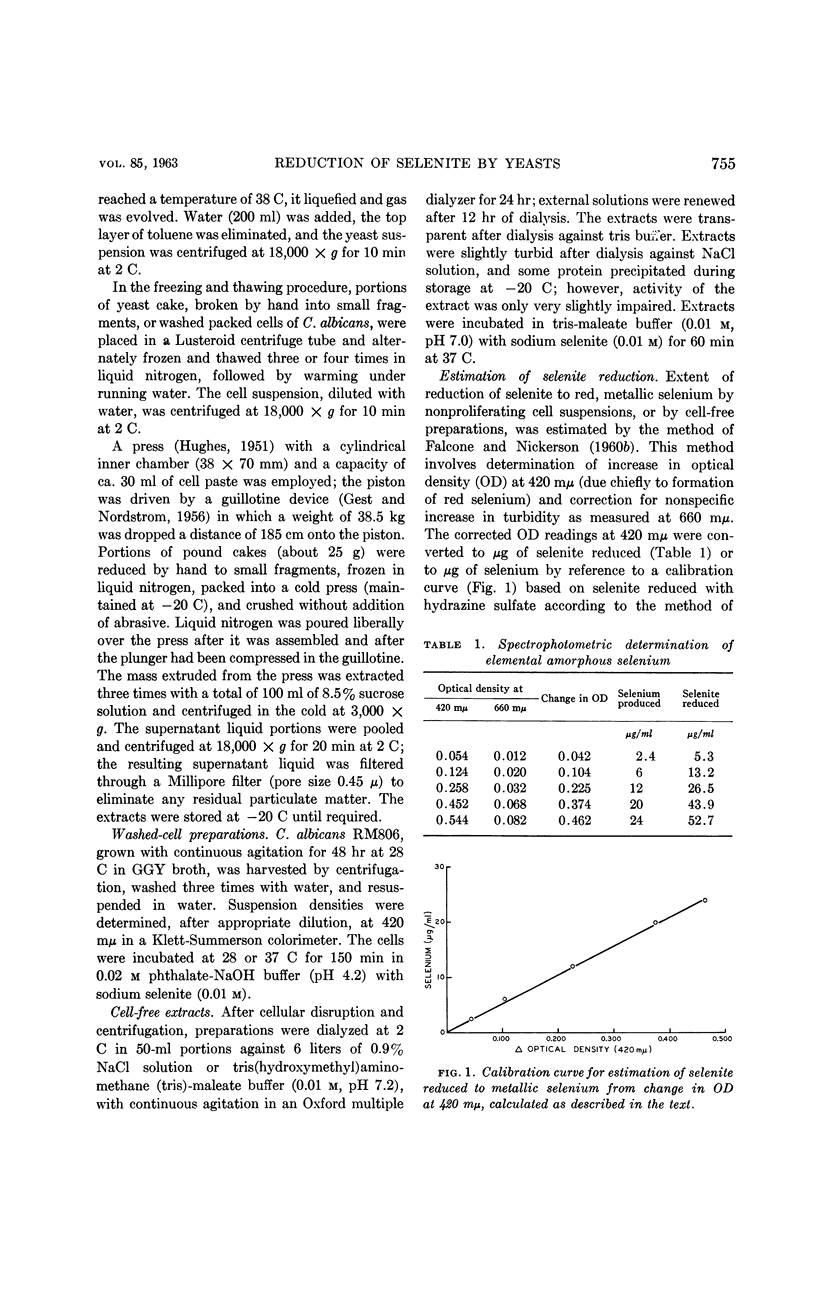
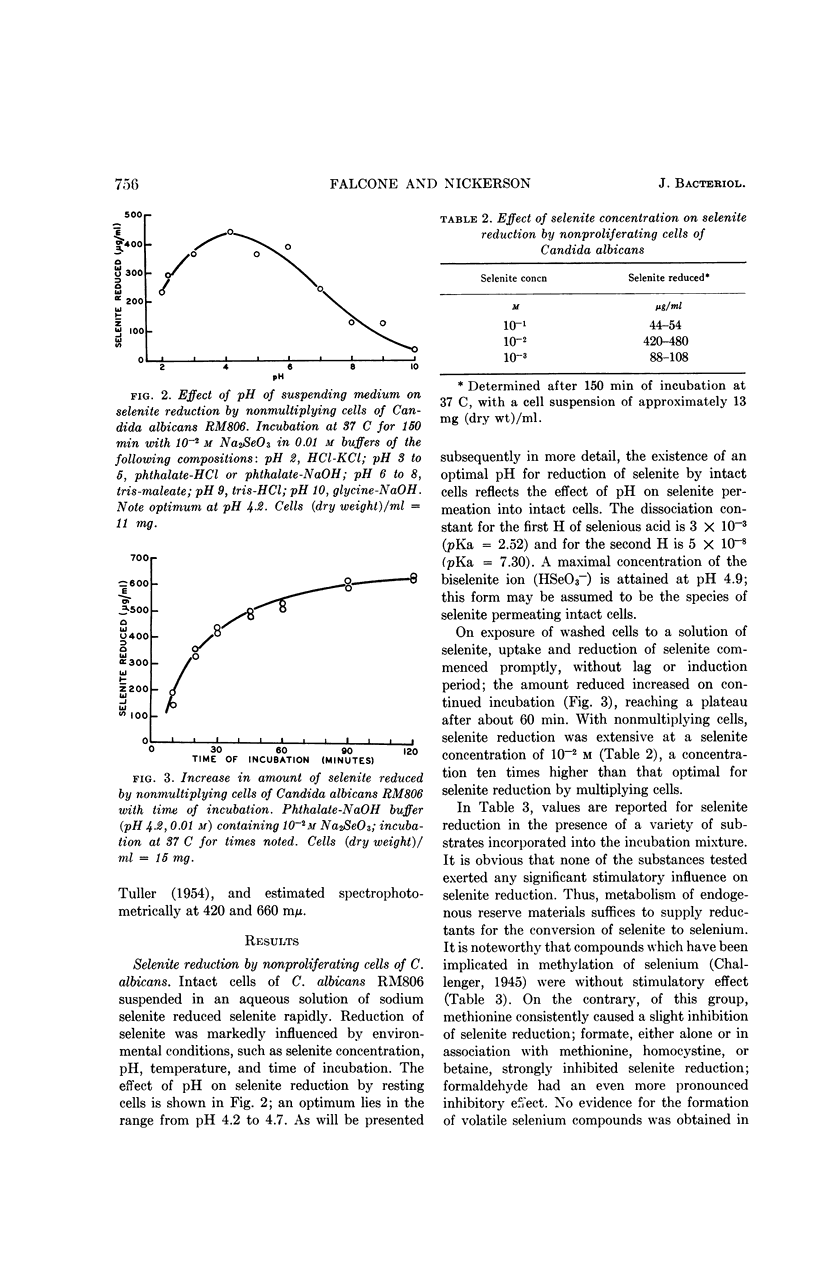
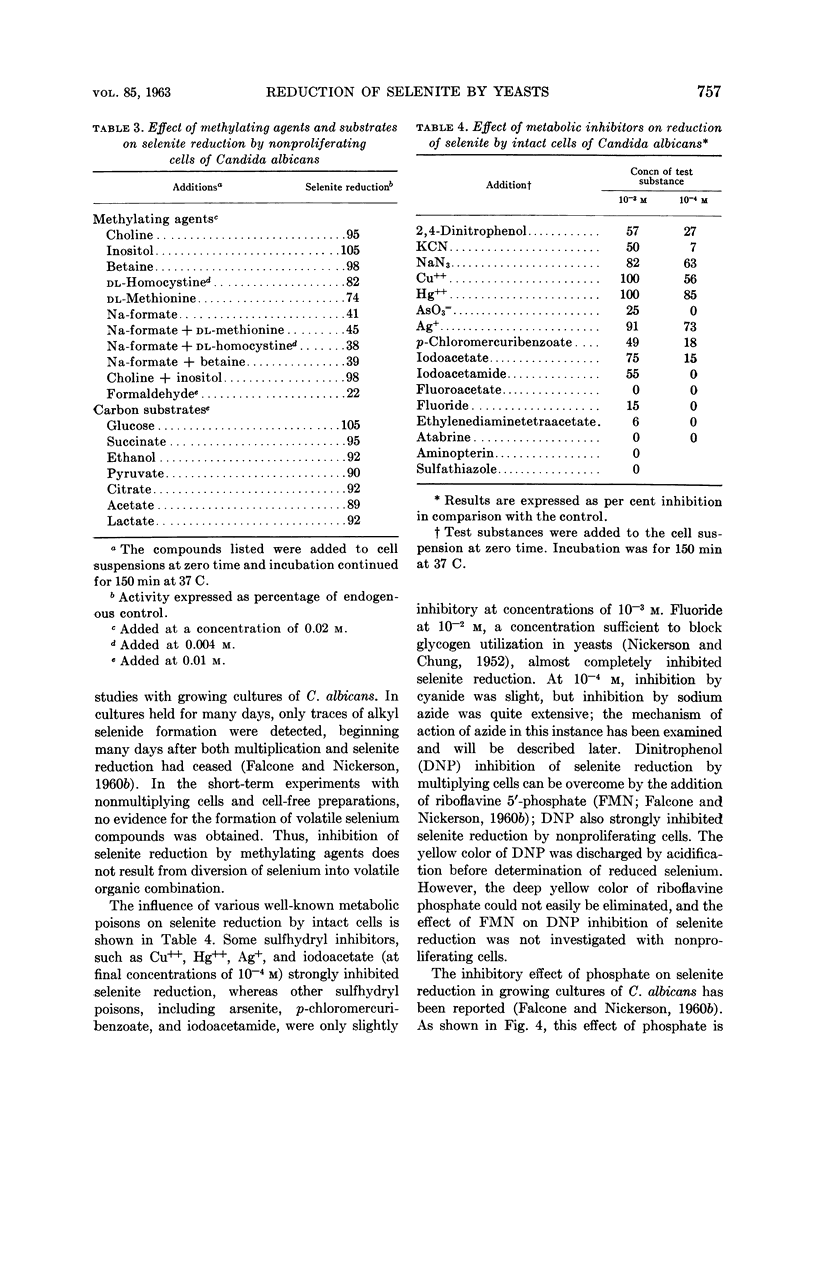
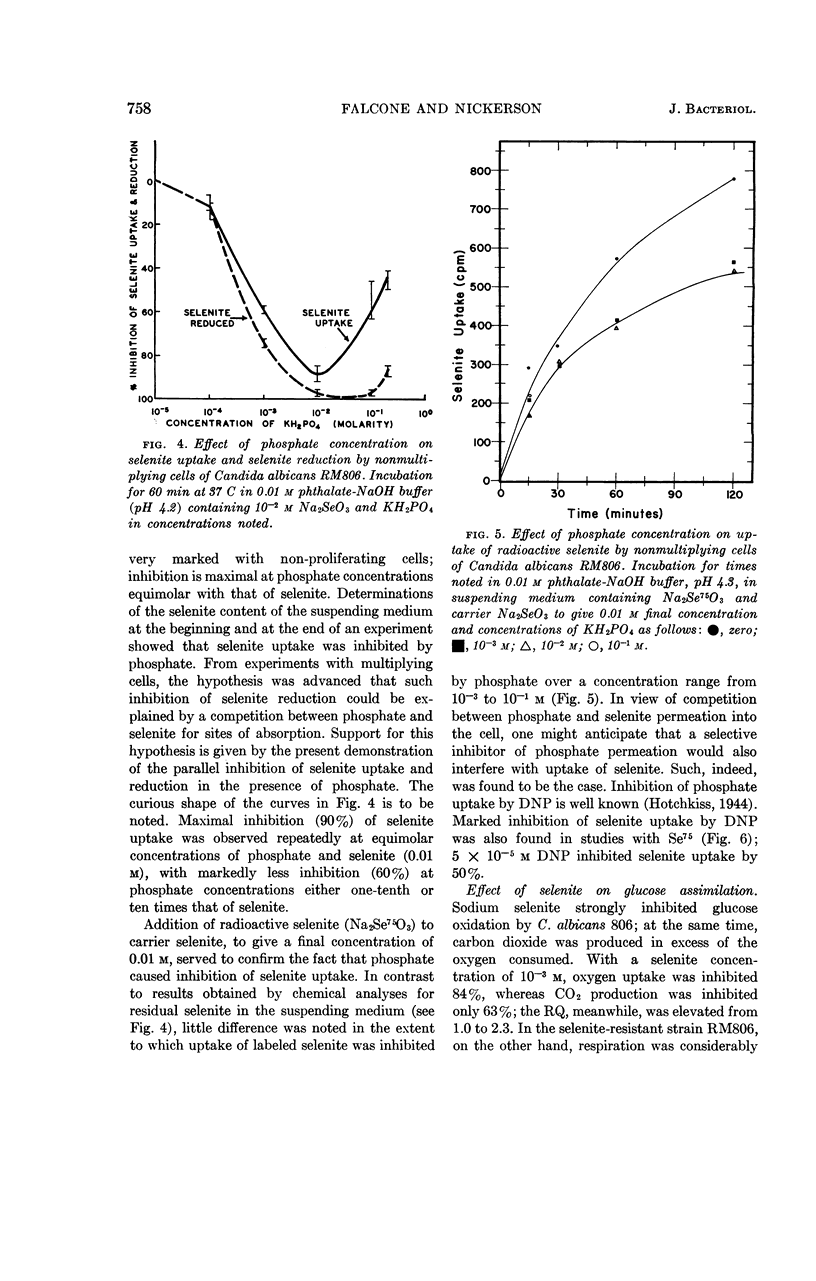
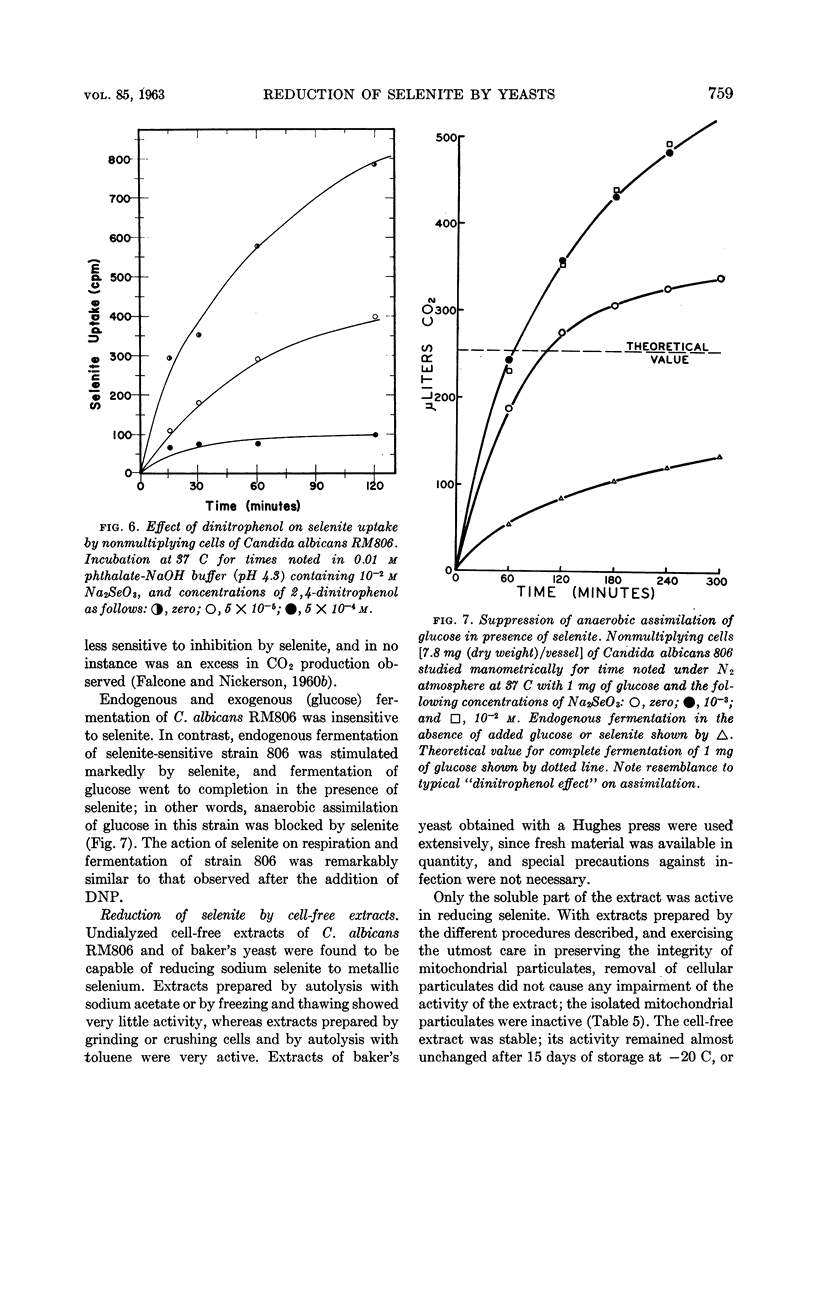
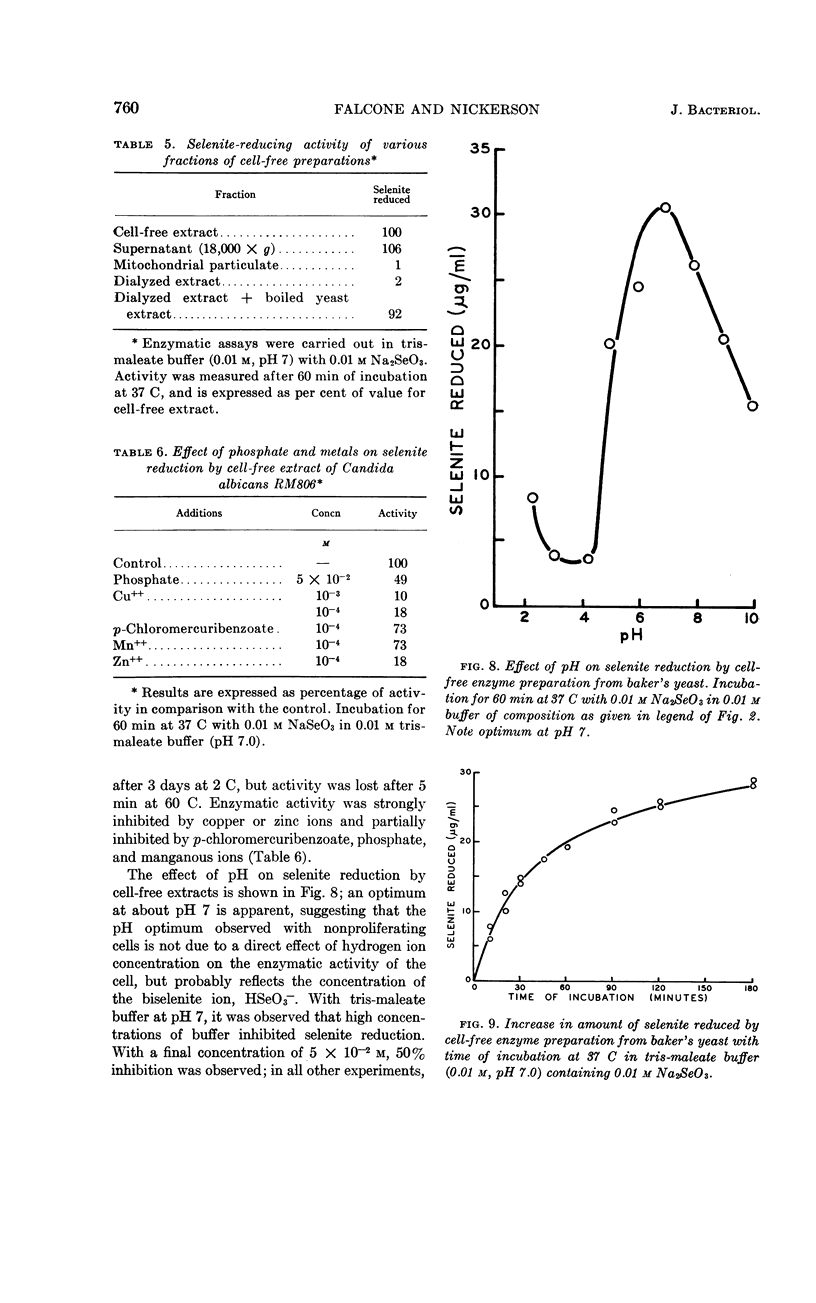
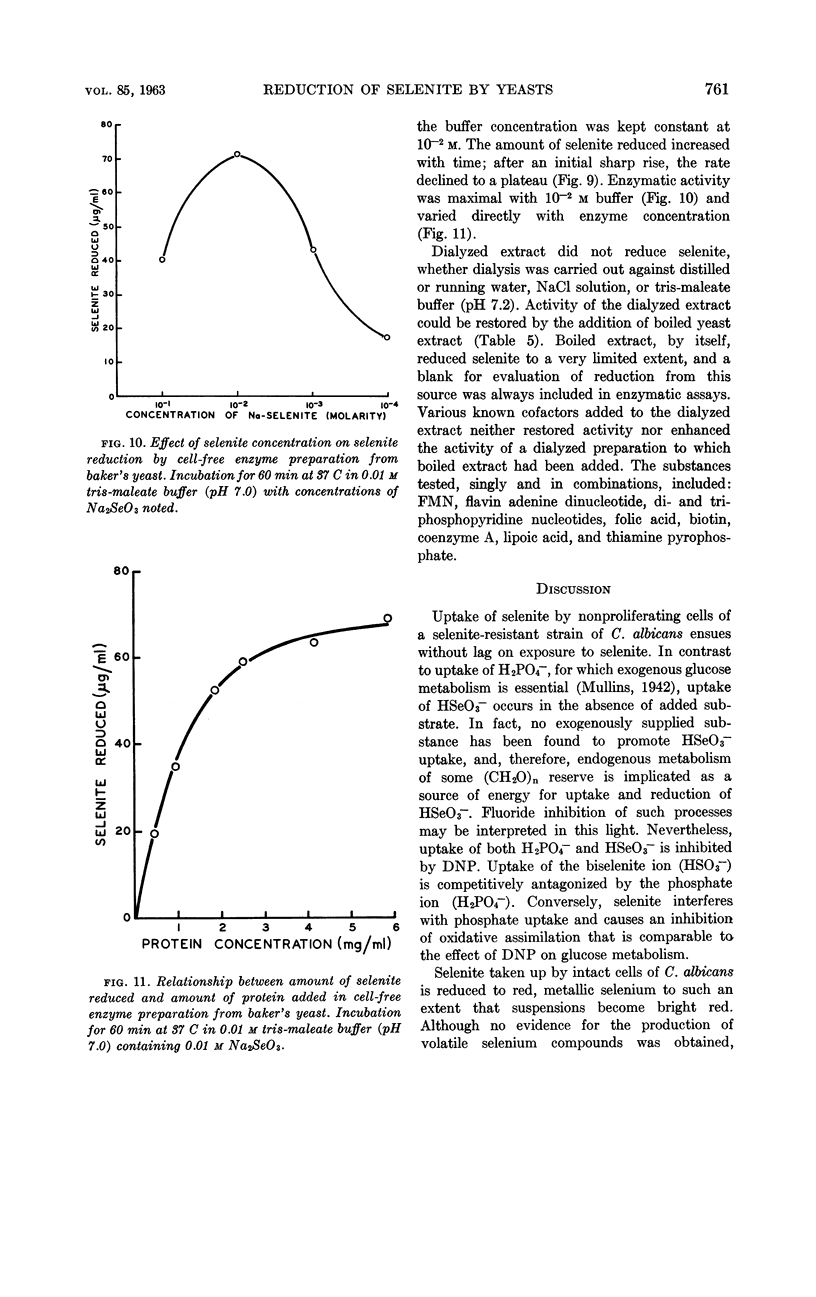
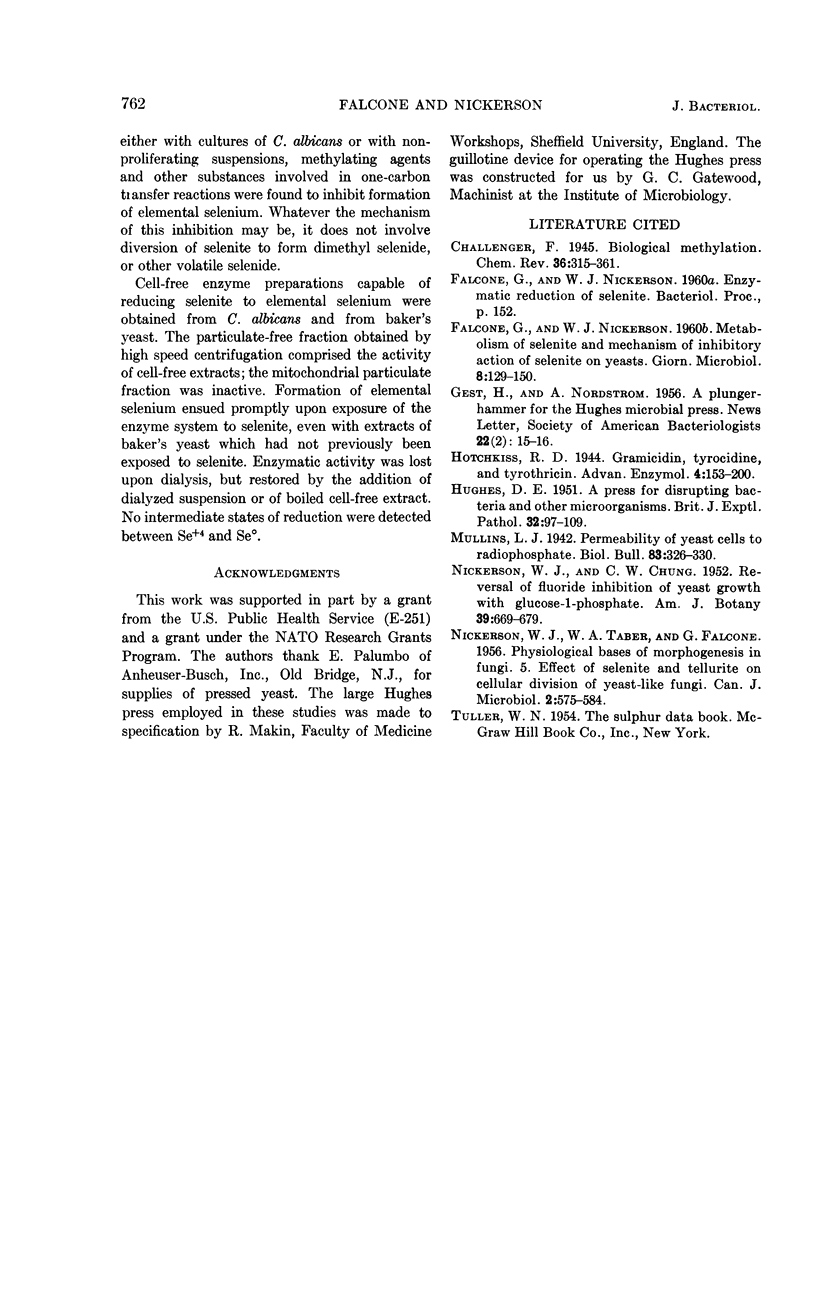
Selected References
These references are in PubMed. This may not be the complete list of references from this article.
- FALCONE G., NICKERSON W. J., TABER W. A. Physiological bases of morphogenesis in fungi. V. Effect of selenite and tellurite on cellular division of yeastlike fungi. Can J Microbiol. 1956 Oct;2(6):575–584. doi: 10.1139/m56-070. [DOI] [PubMed] [Google Scholar]
- HUGHES D. E. A press for disrupting bacteria and other micro-organisms. Br J Exp Pathol. 1951 Apr;32(2):97–109. [PMC free article] [PubMed] [Google Scholar]


